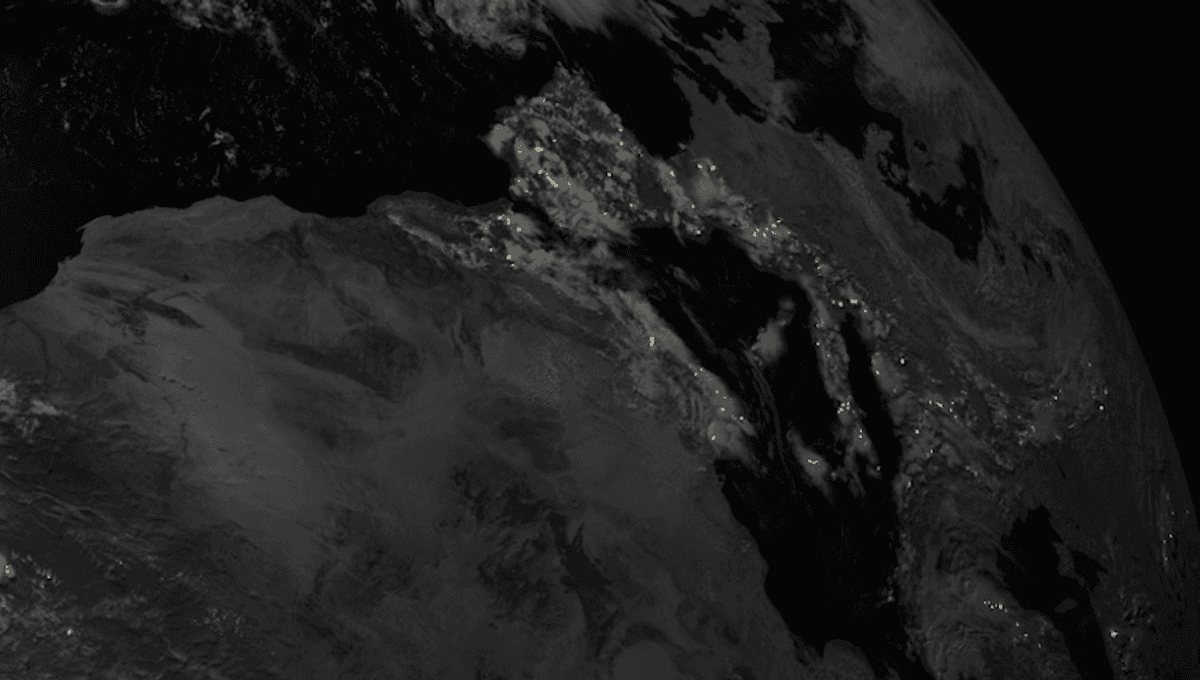
The first images and videos of the European Space Agency’s (ESA) new Lightning Imager have been released and you can watch thousands of lightning strikes flash across the globe. This is the first ever satellite instrument capable of continuously detecting lightning across Europe and Africa.
ESA, along with the European Organisation for the Exploitation of Meteorological Satellites (EUMETSAT), has released the first animations from the Lightning Imager onboard the first Meteosat Third Generation satellite. The craft launched at the end of last year and its goal goes beyond capturing the lightning in incredible animations: it aims to allow for the detection and even prediction of severe storms.
The satellite is in geostationary orbit, at roughly 36,000 kilometers (22,200 miles). That means that it goes around the Earth in 24 hours, looking at the same portion of our planet. From that vantage point, its four cameras snap 1,000 images per second, day or night, delivering incredible views of lightning across multiple continents including their most remote regions, as well as over the oceans around and between them.
“The animations show the instrument’s ability to accurately and effectively detect lightning activity over the whole area of the cameras’ field of view, which covers 84 percent of the Earth disc,” Simonetta Cheli, Director of Earth Observation Programmes at ESA, said in a statement sent to IFLScience.
Monitoring lightning, especially where it is not usually spotted, is very valuable to deliver more accurate weather forecasts. And not just for people on the ground. The data from Lightning Imager will be really important for air traffic safety as well, as lightning can affect instrumentation.
“Severe storms are often preceded by abrupt changes in lightning activity. By observing these changes in activity, Lightning Imager data will give weather forecasters additional confidence in their forecasts of severe storms,” EUMETSAT Director General Phil Evans added. “When these data are used in conjunction with the high-resolution data from the Flexible Combined Imager, weather forecasters will be better able to track the development of severe storms and have a longer lead-in time to warn authorities and communities.”
The technology of the instrument is pretty incredible. Not only can it capture flashes of lightning so quickly that we would not see them with the naked eye, but it can also sift the good data from the bad, right there in space.
“Thanks to specific algorithms, data is processed on board to send only useful information to Earth, supporting the development of more accurate weather forecasts, as well as contributing to the study of weather phenomena and air transport safety,” Leonardo Project Engineering Manager for the Lightning Imager, Guia Pastorini, explained. Leonardo is the company that built the instrument.
The animations are the first results from the Lightning Imager. Data from the instrument and the rest of the mission will be available in early 2024. The whole system is still being calibrated to achieve the maximum possible sensitivity.
Source Link: Watch Thousands Of Lightning Strikes Flash Across Europe And Africa